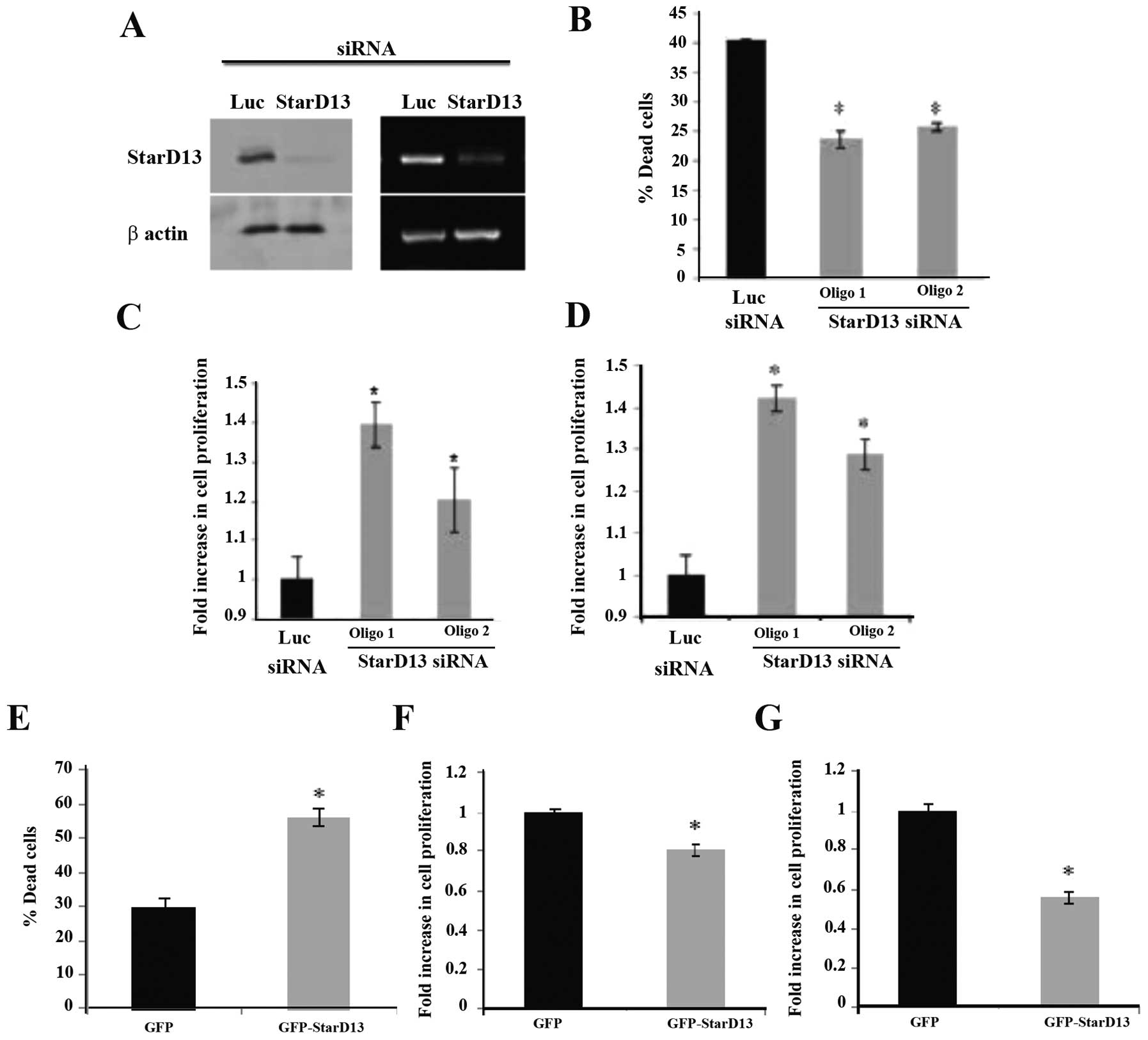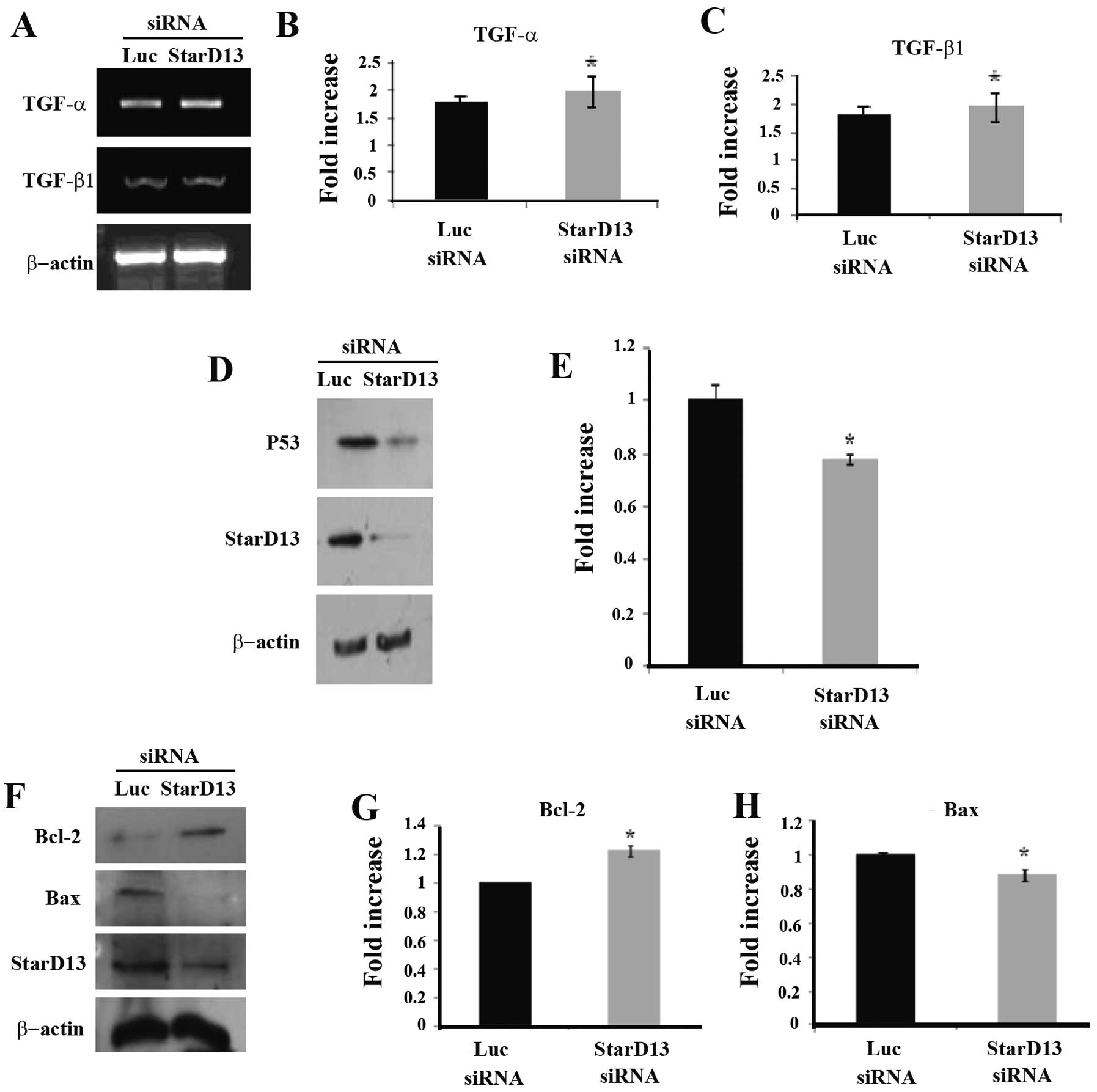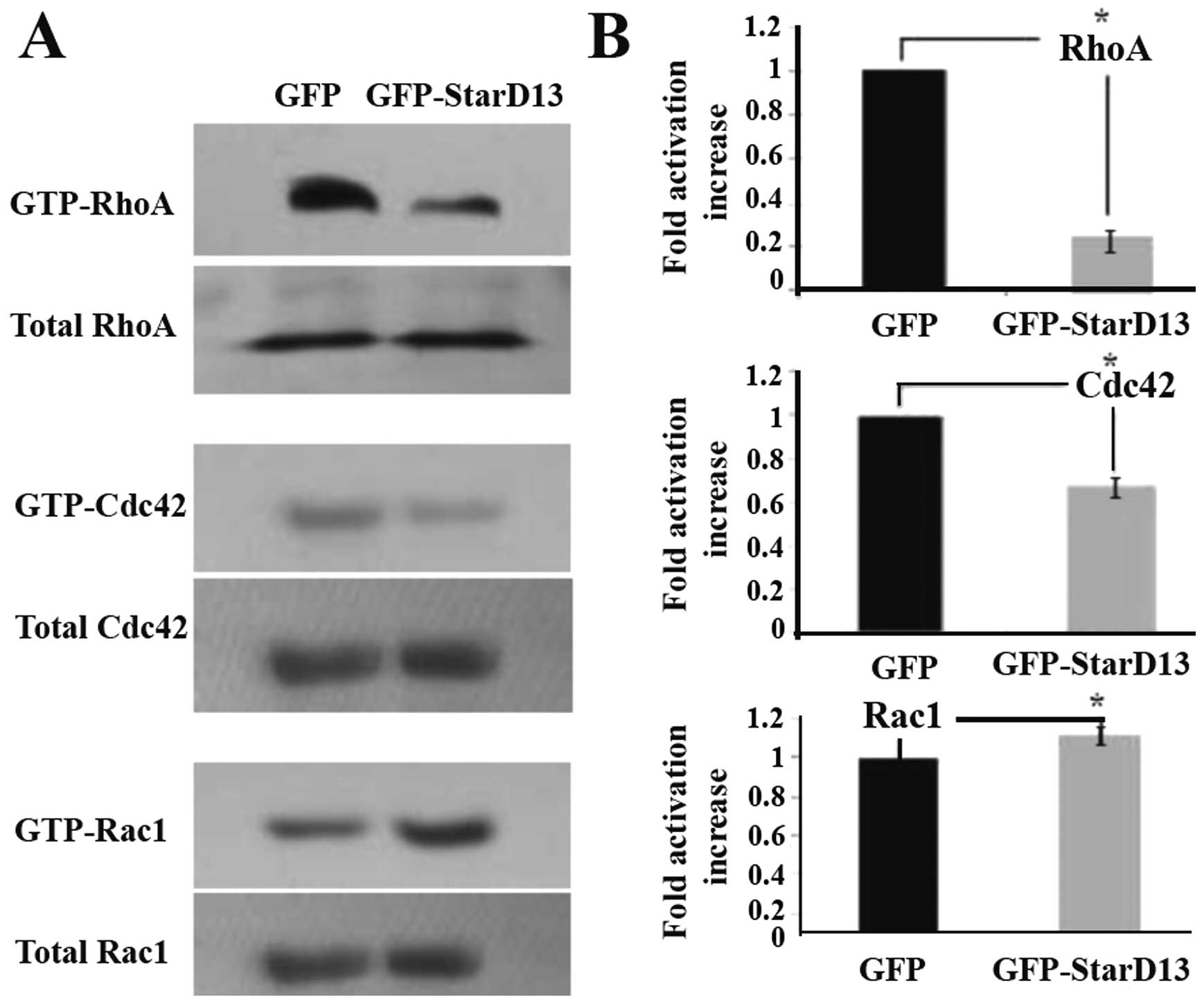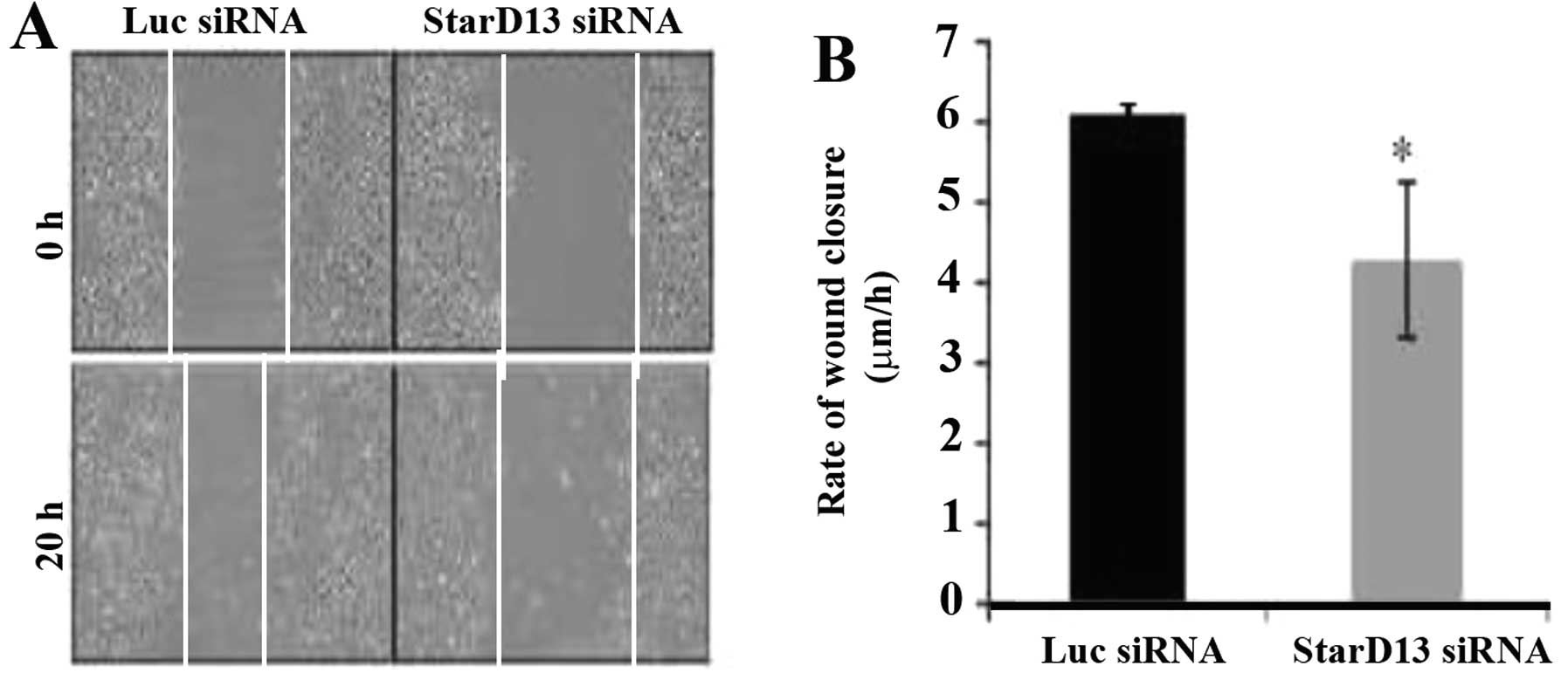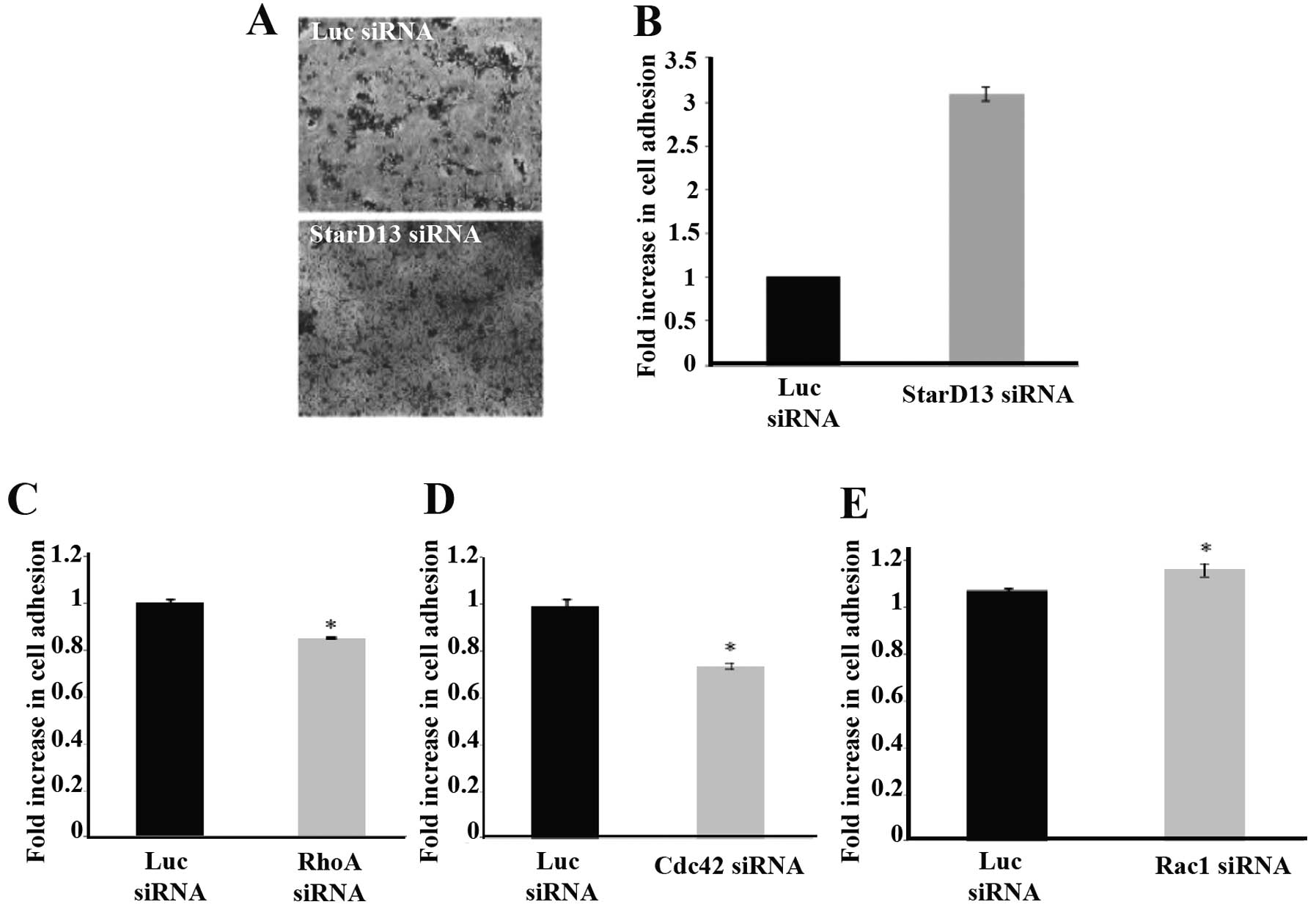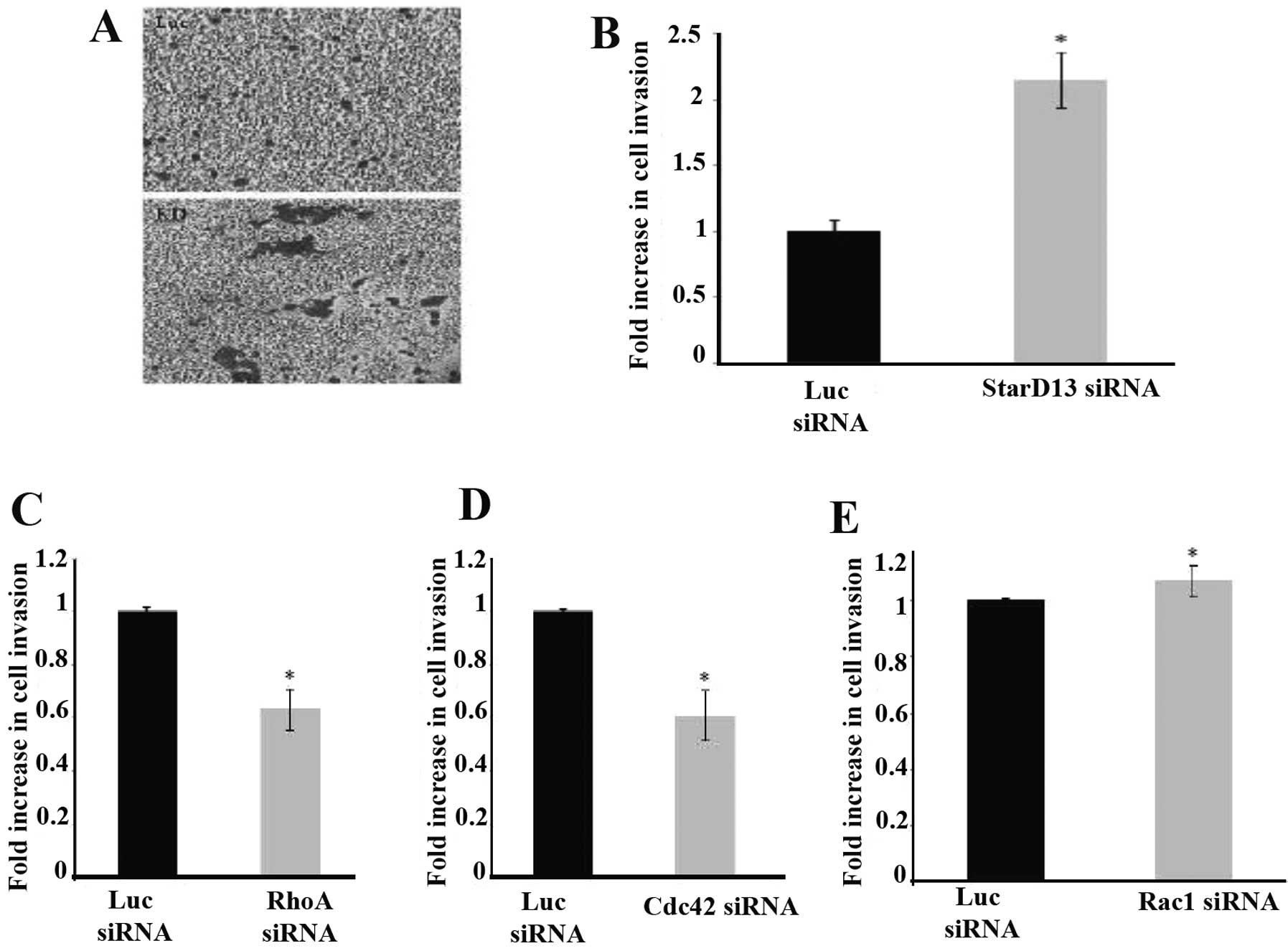|
1
|
World Health Organization. Cancer
Statistics. 4–February. 2010, (Online). Available: http://www.who.int/cancer/detection/colorectalcancer/en/.
|
|
2
|
Cunningham D, Atkin W, Lenz H-J, Lynch H,
Minsky B, Nordlinger B and Starling N: Colorectal cancer. Lancet.
375:1030–1047. 2010. View Article : Google Scholar
|
|
3
|
Ionov Y, Peinado MA, Malkhosyan S, Shibata
D and Perucho M: Ubiquitous somatic mutations in simple repeated
sequences reveal a new mechanism for colonic carcinogenesis.
Nature. 363:558–561. 1993. View
Article : Google Scholar : PubMed/NCBI
|
|
4
|
Alpers DH, Kalloo AN, Owyang C, Powell DW
and Kaplowitz N: Principles of Clinical Gastroenterology. 5th
edition. Wiley-Blackwell Publishing; Oxford: pp. 380–382. 2009
|
|
5
|
Maddika S, Ande SR, Panigrahi S,
Paranjothy T, Weglarczyk K, Zuse A, Eshraghi M, Manda KD, Wiechec E
and Los M: Cell survival, cell death and cell cycle pathways are
interconnected: Implications for cancer therapy. Drug Resist Updat.
10:13–29. 2007. View Article : Google Scholar : PubMed/NCBI
|
|
6
|
Vivanco I and Sawyers CL: The
phosphatidylinositol 3-kinase AKT pathway in human cancer. Nat Rev
Cancer. 2:489–501. 2002. View
Article : Google Scholar : PubMed/NCBI
|
|
7
|
Levine AJ, Momand J and Finlay CA: The p53
tumour suppressor gene. Nature. 351:453–456. 1991. View Article : Google Scholar : PubMed/NCBI
|
|
8
|
Brown C, Lain S, Verma CS, Fersht AR and
Lane DP: Awakening guardian angels: drugging the p53 pathway. Nat
Rev Cancer. 9:862–873. 2009. View
Article : Google Scholar : PubMed/NCBI
|
|
9
|
Markowitz S: DNA repair defects inactivate
tumor suppressor genes and induce hereditary and sporadic colon
cancers. J Clin Oncol. 18(21 Suppl): 75S–80S. 2000.PubMed/NCBI
|
|
10
|
Lauffenburger DA and Horwitz AF: Cell
migration: a physically integrated molecular process. Cell.
84:359–369. 1996. View Article : Google Scholar : PubMed/NCBI
|
|
11
|
El Zouhairi M, Charabaty A and Pishvaian
MJ: Molecularly targeted therapy for metastatic colon cancer:
proven treatments and promising new agents. Gastrointest Cancer
Res. 4:15–21. 2011.PubMed/NCBI
|
|
12
|
Condeelis JS: How is actin polymerization
nucleated in vivo? Trends Cell Biol. 11:288–293. 2001. View Article : Google Scholar : PubMed/NCBI
|
|
13
|
Silva D: Signaling pathways responsible
for cancer cell invasion as targets for cancer therapy. Curr Cancer
Drug Targets. 4:327–336. 2004. View Article : Google Scholar : PubMed/NCBI
|
|
14
|
Calvo F and Sahai E: Cell communication
networks in cancer invasion. Curr Opin Cell Biol. 23:621–629. 2011.
View Article : Google Scholar : PubMed/NCBI
|
|
15
|
Morra L and Moch H: Periostin expression
and epithelial-mesenchymal transition in cancer: a review and an
update. Virchows Arch. 459:465–475. 2011. View Article : Google Scholar : PubMed/NCBI
|
|
16
|
Thierry JP: Epithelial-mesenchymal
transitions in tumour progression. Nat Rev Cancer. 2:442–454. 2002.
View Article : Google Scholar : PubMed/NCBI
|
|
17
|
Nieto MA: The ins and outs of the
epithelial to mesenchymal transition in health and disease. Ann Rev
Cell Dev Biol. 27:347–376. 2011. View Article : Google Scholar : PubMed/NCBI
|
|
18
|
Boettner B and Van Aelst L: The role of
Rho GTPases in disease development. Gene. 286:155–174. 2002.
View Article : Google Scholar : PubMed/NCBI
|
|
19
|
Etienne-Manneville S and Hall A: Rho
GTPases in cell biology. Nature. 420:629–635. 2002. View Article : Google Scholar
|
|
20
|
Takai Y, Sasaki T and Matozaki T: Small
GTP-binding proteins. Physiol Rev. 81:153–208. 2001.PubMed/NCBI
|
|
21
|
Vega FM and Ridley AJ: Rho GTPases in
cancer cell biology. FEBS Lett. 582:2093–2101. 2008. View Article : Google Scholar : PubMed/NCBI
|
|
22
|
Wennerberg K and Der CJ: Rho-family
GTPases: it’s not only Rac and Rho (and I like it). J Cell Sci.
117:1301–1312. 2004.
|
|
23
|
Grise F, Bidaud A and Moreau V: Rho
GTPases in hepatocellular carcinoma. Biochim Biophys Acta.
1795:137–151. 2009.PubMed/NCBI
|
|
24
|
Schmidt A and Hall A: Guanine nucleotide
exchange factors for Rho GTPases: turning on the switch. Genes Dev.
16:1587–1609. 2002. View Article : Google Scholar : PubMed/NCBI
|
|
25
|
Moon SY and Zheng Y: Rho GTPase-activating
proteins in cell regulation. Trends Cell Biol. 13:13–22. 2003.
View Article : Google Scholar : PubMed/NCBI
|
|
26
|
Der Mardirossian C and Bokoch GM: GDIs:
central regulatory molecules in Rho GTPase activation. Trends Cell
Biol. 15:356–363. 2005.PubMed/NCBI
|
|
27
|
Garcia-Mata R, Boulter E and Burridge K:
The ‘invisible hand’: regulation of RHO GTPases by RHOGDIs. Nat Rev
Mol Cell Biol. 12:493–504. 2011.
|
|
28
|
Macias MJ, Musacchio A, Ponstingl H,
Nilges M, Saraste M and Oschkinat H: Structure of the pleckstrin
homology domain from β-spectrin. Nature. 369:675–677. 1994.
|
|
29
|
Nobes CD, Hawkins P, Stephens L and Hall
A: Activation of the small GTP-binding proteins rho and rac by
growth factor receptors. J Cell Sci. 108:225–233. 1995.PubMed/NCBI
|
|
30
|
Keely PJ, Westwick JK, Whitehead IP, Der
CJ and Parise LV: Cdc42 and Rac1 induce integrin-mediated cell
motility and invasiveness through PI(3)K. Nature. 390:632–636.
1997. View Article : Google Scholar : PubMed/NCBI
|
|
31
|
Ananthakrishnan R and Ehrlicher A: The
forces behind cell movement. Int J Biol Sci. 3:303–317. 2007.
View Article : Google Scholar : PubMed/NCBI
|
|
32
|
Zhou FQ and Sinder WD: Intracellular
control of developmental and regenerative axon growth. Philos Trans
R Soc Biol Sci. 361:1575–1592. 2006. View Article : Google Scholar : PubMed/NCBI
|
|
33
|
Khalil BD and El-Sibai M: Rho GTPases in
primary brain tumor malignancy and invasion. J Neurooncol.
108:333–339. 2012. View Article : Google Scholar : PubMed/NCBI
|
|
34
|
Burridge K and Wennerberg K: Rho and Rac
take center stage. Cell. 116:167–179. 2004. View Article : Google Scholar : PubMed/NCBI
|
|
35
|
Sander EE, ten Klooster JP, van Delft S,
van der Kammen RA and Collard JG: Rac downregulates Rho activity:
reciprocal balance between both GTPases determines cellular
morphology and migratory behavior. J Cell Biol. 147:1009–1022.
1999. View Article : Google Scholar : PubMed/NCBI
|
|
36
|
El-Sibai M, Pertz O, Pang H, Yip SC,
Lorenz M, Symons M, Condeelis JS, Hahn KM and Backer JM:
RhoA/ROCK-mediated switching between Cdc42- and Rac1-dependent
protrusion in MTLn3 carcinoma cells. Exp Cell Res. 4:1540–1552.
2008. View Article : Google Scholar : PubMed/NCBI
|
|
37
|
Sahai E and Marshall CJ: RHO-GTPases and
cancer. Nat Rev Cancer. 2:133–142. 2002. View Article : Google Scholar
|
|
38
|
Clark EA, Golub TR, Lander ES and Hynes
RO: Genomic analysis of metastasis reveals an essential role for
RhoC. Nature. 406:532–535. 2000. View Article : Google Scholar : PubMed/NCBI
|
|
39
|
Brabletz T, Hlubek F, Spaderna S,
Schmalhofer O, Hiendelmeyer E, Jung A and Kirchner T: Invasion and
metastasis in colorectal cancer: epithelial-mesenchymal transition,
mesenchymal-epithelial transition, stem cells and β-catenin. Cells
Tissues Organs. 179:56–65. 2005.
|
|
40
|
Jaffe AB and Hall A: Rho GTPases:
biochemistry and biology. Ann Rev Cell Dev Biol. 21:247–269. 2005.
View Article : Google Scholar : PubMed/NCBI
|
|
41
|
Ching YP, Wong CM, Chan SF, Leung TH, Ng
DC, Jin DY and Ng IO: Deleted in liver cancer (DLC) 2 encodes a
RhoGAP protein with growth suppressor function and is
underexpressed in hepatocellular carcinoma. J Biol Chem.
278:10824–10830. 2003. View Article : Google Scholar : PubMed/NCBI
|
|
42
|
Popescu NC and Durkin ME: Rho GTPase
activating protein cDNA on chromosome 13q12 is the deleted in liver
cancer (DLC2) gene. Biochem Biophys Res Commun. 315:7812004.
View Article : Google Scholar : PubMed/NCBI
|
|
43
|
Thorsell AG, Lee WH, Persson C, Siponen
MO, Nilsson M, Busam RD, Kotenyova T, Schuler H and Lehtio L:
Comparative structural analysis of lipid binding START domains.
PLos One. 6:e195212011. View Article : Google Scholar : PubMed/NCBI
|
|
44
|
Ullmannova V and Popescu NC: Expression
profile of the tumor suppressor genes DLC-1 and DLC-2 in solid
tumors. Int J Oncol. 29:1127–1132. 2006.PubMed/NCBI
|
|
45
|
Durkin ME, Yuan BZ, Zhou X, Zimonjic DB,
Lowy DR, Thorgeirsson SS and Popescu NC: DLC-1: a Rho
GTPase-activating protein and tumour suppressor. J Cell Mol Med.
11:1185–1207. 2007. View Article : Google Scholar : PubMed/NCBI
|
|
46
|
Liao YC and Lo SH: Deleted in liver
cancer-1 (DLC-1): a tumor suppressor not just for liver. Int J
Biochem Cell Biol. 40:843–847. 2008. View Article : Google Scholar : PubMed/NCBI
|
|
47
|
El-Sitt S, Khalil BD, Hanna S, El-Sabban
M, Fakhreddine N and El-Sibai M: DLC2/StarD13 plays a role of a
tumor suppressor in astrocytoma. Oncol Rep. 28:511–518.
2012.PubMed/NCBI
|
|
48
|
Ng DC, Chan SF, Kok KH, Yam JW, Ching YP,
Ng IO and Jin DY: Mitochondrial targeting of growth suppressor
protein DLC2 through the START domain. FEBS Lett. 580:191–198.
2006. View Article : Google Scholar : PubMed/NCBI
|
|
49
|
Kawai K, Seike J, Iion T, Kiyota M, Iwamae
Y, Nishitani H and Yagisawa H: START-GAP2/DLC2 is localized in
focal adhesions via its N-terminal region. Biochem Biophys Res
Commun. 380:736–741. 2009. View Article : Google Scholar : PubMed/NCBI
|
|
50
|
Leung TH, Ching YP, Yam JW, Wong CM, Yau
TO, Jin DY and Ng IO: Deleted in liver cancer 2 (DLC2) suppresses
cell transformation by means of inhibition of RhoA activity. Proc
Natl Acad Sci USA. 102:15207–15212. 2005. View Article : Google Scholar : PubMed/NCBI
|
|
51
|
Lin Y, Chen NT, Shih YP, Liao YC, Xue L
and Lo SH: DLC2 modulates angiogenic responses in vascular
endothelial cells by regulating cell attachment and migration.
Oncogene. 29:3010–3016. 2010. View Article : Google Scholar : PubMed/NCBI
|
|
52
|
Xiaorong L, Wei W, Liyuan Q and Kaiyan Y:
Underexpression of deleted in liver cancer 2 (DLC2) is associated
with overexpression of RhoA and poor prognosis in hepatocellular
carcinoma. BMC Cancer. 23:205–211. 2008. View Article : Google Scholar : PubMed/NCBI
|
|
53
|
Arjonen A, Kaukonen R and Ivaska J:
Filopodia and adhesion in cancer cell motility. Cell Adh Migr.
5:421–430. 2011. View Article : Google Scholar : PubMed/NCBI
|
|
54
|
Wolfenson H, Henis YI, Geiger B and
Bershadsky AD: The heel and toe of the cell’s foot: a multifaceted
approach for understanding the structure and dynamics of focal
adhesions. Cell Motil Cytoskeleton. 66:1017–1029. 2009.
|
|
55
|
Cox EA, Sastry SK and Huttenlocher A:
Integrin-mediated adhesion regulates cell polarity and membrane
protrusion through the Rho family of GTPases. Mol Biol Cell.
12:265–277. 2001. View Article : Google Scholar : PubMed/NCBI
|
|
56
|
Wu M, Wu Z, Rosenthal DT, Rhee EM and
Merajver SD: Characterization of the roles of RhoC and RhoA GTPases
in invasion, motility, and matrix adhesion in inflammatory and
aggressive breast cancers. Cancer. 116:2768–2782. 2010. View Article : Google Scholar : PubMed/NCBI
|
|
57
|
Shih YP, Takada Y and Lo SH: Silencing of
DLC1 upregulates PAI-1 expression and reduces migration in normal
prostate cells. Mol Cancer Res. 10:34–39. 2012. View Article : Google Scholar : PubMed/NCBI
|
|
58
|
Cao X, Voss C, Zhao B, Kaneko T and Li SS:
Differential regulation of the activity of deleted in liver cancer
1 (DLC1) by tensins controls cell migration and transformation.
Proc Natl Acad Sci USA. 109:4708–4718. 2012. View Article : Google Scholar : PubMed/NCBI
|
|
59
|
Massagué J: TGFβ in cancer. Cancer Cell.
134:215–230. 2008.
|
|
60
|
Wang Y and McNiven MA: Invasive matrix
degradation at focal adhesions occurs via protease recruitment by a
FAK-p130Cas complex. J Cell Biol. 196:375–385. 2012. View Article : Google Scholar : PubMed/NCBI
|















